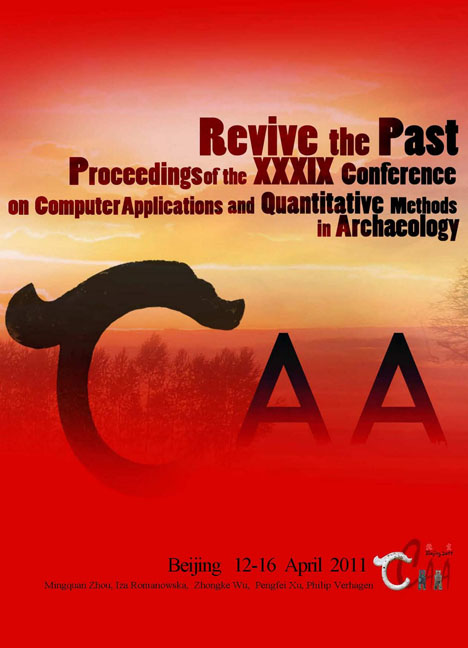 Revive the Past
Revive the Past Strontium Isotope Analysis of Archaeological Fauna from the Wadian Site
Published online by Cambridge University Press: 23 June 2021
Summary
Abstract:
The Wadian site is located at Yuzhou City, Henan Province. It is a large settlement site of the Longshan culture and it is dated to 4225-3755 BP. According to an archaeozoological study four domestic animals such as dog, pig, sheep and cattle were found on the site. The purpose of our study is to discuss the problem of how strontium isotope analysis can be used to identify non-local individuals at the Wadian site. Tooth Enamel and bone samples from 11 animal individuals were analysed for strontium isotope ratio (87Sr/86Sr), by the thermal ionization mass spectrometry, including five pigs, four mice, one sheep and one cow. Molars were sampled whenever possible in faunal species. According to the local strontium isotopes ratio range two pigs, one sheep and one cow from the Wadian site fell well outside the local strontium isotopes ratio range and were considered to be non-local.
Key Words: Wadian Site, Fauna, Strontium Isotopes
Introduction
In recent years, isotopic tracers have been employed in many studies to map the geographical movement of certain materials and species (Towers et al. 2010, 509; Copeland et al. 2010,1 437; Kennedy et al. 1997, 766; Blum et al. 2000, 87; Aberg, 1995, 309). Similar methods were introduced in archaeology two decades ago for the investigation of residential changes among prehistoric humans (Ericson 1985, 503). Of all the isotopes that are currently analysed in archaeological skeletal tissues, strontium isotopes are among the most effective for characterizing prehistoric human and animal mobility and their study is a hotspot in the international archaeometric field. Strontium isotope analysis of dental tissues can be used to reveal patterns of movement in animals (Bentley 2006, 135).
In principle, the method is quite simple. Strontium has a geological origin and four naturally occurring isotopes: non-radiogenic 84Sr, 86Sr and 88Sr, and the radiogenic 87Sr. 87Sr is formed through the radioactive decay of rubidium (87Rb—87Sr+β-—υ+Q). It may be demonstrated theoretically that the 87Sr content of a rock is dependent on the 87Rb content and the age of the rock. Different rocks are characterized by distinct ratios of two isotopes of strontium, 87Sr and 86Sr. As rocks are weathered into soils, the plants growing in those soils acquire the 87Sr/86Sr ratio.
- Type
- Chapter
- Information
- Revive the PastProceedings of the 39th Conference of Computer Applications and Quantitative Methods in Archaeology, pp. 227 - 233Publisher: Amsterdam University PressPrint publication year: 2012
